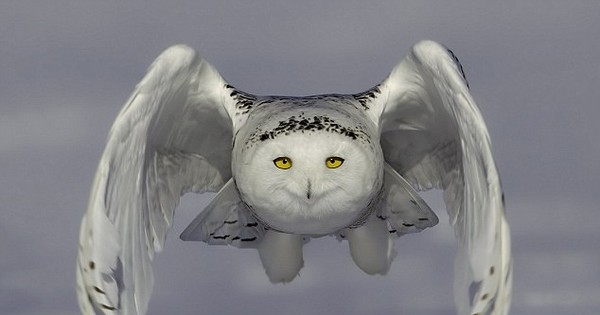
The mystery snail is a freshwater snail of the Ampullariidae family. These snails’ color variations, ease of care, beneficial algae-eating behavior, and peaceful temperament make them popular with aquarists. Reaching up to 2 inches in diameter, mystery snails are ideal for small, 5-gallon tanks.

Mystery Snail Facts & Overview
| Scientific name: | Pomacea bridgesii |
| Common names | Mystery snail, spike-topped apple snail |
| Distribution: | South America |
| Size: | Up to 2 inches |
| Life expectancy: | 1–2 years |
| Color: | Brown, black, blue, purple, gold, and white |
| Diet: | Herbivore |
| Temperament: | Peaceful |
| Minimum tank size: | 5 gallons |
| Temperature: | 68–82°F (20–28°C) |
| pH: | 7.5–8.5 |
| Hardness: | 7–18 dGH |
| Care level: | Easy |
Origin
The mystery snail (Pomacea bridgesii) is native to South America, where it inhabits rivers, lakes, and swamps of Brazil, Bolivia, and Paraguay. This species is common in the wild and isn’t considered endangered or threatened.

Like many other invertebrates, mystery snails are natural scavengers that feed on algae, food leftovers, and detritus in the water — behaviors that help keep tanks clean.
Advertisements
Adult Size & Lifespan
Adult mystery snails reach 2 inches in diameter, with females being slightly larger than males. This species has an average lifespan of one year in the wild, though can live up to two years in captivity with proper care and ideal tank conditions.

Availability
Mystery snails are prolific in the pet trade and are readily available at most fish stores. Expect to pay up to $6 per snail, with the price depending on the snail’s color morph. A group of six mystery snails costs between $18 and $30.
Mystery snails can be bought online from Aquatic Arts, LiveAquaria, and Flip Aquatics.

Appearance & Behavior
Mystery snails come in a wide range of colors. This species is peaceful and makes a wonderful addition to a community tank.
Colors, Patterns, and Size
Mystery snails have large, attractive shells that come in a variety of colors. Common colors include gold, brown, black, and ivory, while the rarest varieties are purple and albino snails. Patterns and markings can also differ, though the shell is typically banded or solid.
Adult mystery snails are 1 to 2 inches in diameter, and males are slightly smaller and have more rounded shell openings than females. The easiest way to sex mystery snails is to take them out of the tank and look underneath their shells. The sex organ is located next to the lung sac. Males have a penis sheath, while females simply have a hole.
The mystery snail’s body is typically a light beige or ivory color with dark flecks, and its siphon (breathing tube) is long and protruding. This species can also breathe through gills.
Mystery snails are susceptible to several health issues that can cause shell changes. Signs of illness include shell discoloration, brittleness, and white spots.
Typical Behavior
Mystery snails are peaceful invertebrates that get along well with other species and their own kind. The snails are slow-moving, keep to themselves, and spend most of their time at the bottom of the tank eating algae, detritus, or food leftovers.
Advertisements
Mystery snails are well-known for their captivating jumping behavior, where they’ll climb up the tank walls, release their grip, and glide back down to the bottom.
When threatened, the mystery snail retreats inside its shell and shuts its trap door, called the operculum.
Mystery Snail Tank & Water Requirements
The mystery snail is hardy and can tolerate a range of water conditions, though it thrives in a biotope tank setup (replicates natural habitat). The tank must be at least 5 gallons, densely vegetated, and have a hard substrate. Water should be warm and on the alkaline side.
Habitat and Tank Requirements
The mystery snail is accustomed to moderately hard, alkaline water and temperatures between 68 and 82°F. The pH level should never drop below 7.5 because this neutral value can cause the shell to dissolve or grow improperly. Monitor the pH levels daily with a pH meter.
Advertisements
The substrate must be hard and offer good resistance to allow the snail to easily move around the bottom of the tank. Small pebbles, sand, and gravel are ideal. Avoid materials that are harsh or rough as they can damage the mystery snail’s delicate body.
Adding rocks and plants throughout the tank helps mystery snails feel at home. Suitable plants include anubias, java moss, hornwort, and bolbitis.
Mystery snails often go up to the surface to breathe in air, so ensure there’s a gap of 2 to 4 inches between the lid and water. Because of their adventurous nature and excellent climbing ability, a secure tank lid is needed to prevent the snails from escaping.
Water Conditions
| Water type: | Slow-moving freshwater |
| Tank size: | Minimum 5 gallons, increase size by 5 gallons for every two mystery snails |
| Water temperature: | 68–82°F (20–28°C) |
| Substrate: | Hard sand, pebbles, gravel |
| Tank setup: | Densely vegetated with plenty of rocks. Water level a few inches below the lid |
| Acidity: | Alkaline, 7.5–8.5 |
| Water hardness: | Moderately hard, 7–18 dGH |
| Filter: | Filtration system that generates a low current |
| Lighting: | Dim to moderate. Avoid harsh, direct lighting |
| Water supplements: | Calcium |
Keeping water fluctuations at a minimum and adding calcium supplements to the tank helps mystery snails live healthy, long lives. Make sure the lid is secure to prevent these invertebrates from escaping.
Advertisements
Care & Diet
Mystery snails are ideal for beginner aquarists because the species is peaceful, hardy, and isn’t picky over food. Common health problems that affect mystery snails include parasites, stunted growth, and shell issues.
Diet and Feeding
Mystery snails happily scavenge on algae and leftovers in the water, but their diet can be supplemented with algae wafers, pellets, and blanched vegetables like zucchini, lettuce, and cucumber. Adjust the amount of additional food based on the quantity of algae in the tank.
Avoid overfeeding mystery snails because too much food can lead to health problems and reduced water quality.
General Care
Mystery snails are easy to care for because they can tolerate a range of water conditions and have minimal feeding requirements. Perform partial, 25% water changes weekly to keep ammonia and nitrate levels low. Provide calcium supplements regularly, and keep the tank out of direct sunlight.
Advertisements
Common Problems
Mystery snails are a relatively healthy species, but poor quality water or an inappropriate diet can lead to several health issues.
Parasites can use mystery snails as their hosts. Affected snails present with white spots, lethargy, and shell discoloration. The affected snails should be quarantined immediately and the tank temperature should be gradually raised by a few degrees to speed up the parasite’s growth cycle.
Without proper nutrition, mystery snails can experience stunted growth. Provide a nutritious, calcium-rich diet with leafy greens and sinking wafers.
A lack of calcium in the water can cause the mystery snail’s shell to become brittle, cracked, and discolored. Calcium supplements and a stable, appropriate pH level can restore shell health.
Advertisements
Avoid using copper-based medications because the chemical is highly toxic to mystery snails.
Is a Mystery Snail Dangerous?
Mystery snails are peaceful and completely harmless. This species can be handled, but handling should be brief to prevent the snail from becoming stressed or drying out.
Mystery snails, particularly wild-caught snails, can harbor parasites and must be quarantined in a separate tank before being introduced to the main tank. The quarantine period should last for three to four weeks.
Breeding
Mystery snails are gonochoristic egg layers. As long as there are males and females in the tank, the snails will breed readily without any intervention. However, plentiful food, a low water level, and a warm temperature help establish ideal breeding conditions.
Females lay their eggs inside cocoons at the water’s surface. The eggs are pink and hatch within two to four weeks. To give the baby snails the best chance of success, remove them and raise them in a separate, 5-gallon tank.
Newly-hatched baby snails drop down into the water, develop quickly, and feed on the same foods as adults.
Breeding can be stressful for females because the males will persistently chase after them. Keep males in a separate tank for a few days if females show signs of stress.
Tank Mates
Mystery snails live peacefully with their own kind and other freshwater species. However, these snails are small and can’t defend themselves, so they shouldn’t be kept with large, aggressive fish.
Advertisements
Suitable tank mates for the mystery snail include:
- Small shrimp
- Bettas
- Tetras
- Gouramis
- Danios
- Mollies
- Platies
- Guppies
- Nerite snails
Should You Get a Mystery Snail for Your Aquarium?
Mystery snails are wonderful pets for beginner fishkeepers because the species is peaceful and easy to care for, and the snails help keep a tank clean.
You should get a mystery snail if you have a freshwater tank that’s at least 5 gallons, contains plenty of plants, and houses peaceful, small fish. Avoid mystery snails if your tank is on the acidic side or houses aggressive, boisterous species.
As long as the mystery snail is properly fed and kept in ideal water conditions, it’ll liven up your tank with its bright colors and captivating behaviors.





